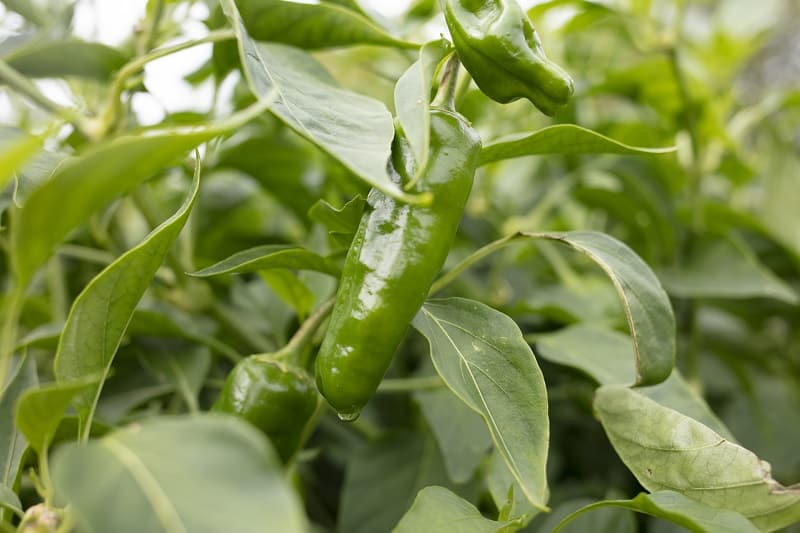
Jalapeno peppers belong to the Capsicum annuum species, and are commonly harvested and consumed while still green, although they can fully ripen and turn orange, red or yellow. This medium-sized chili pepper can grow two to four inches long, and is milder than Serrano peppers. These plants have many health benefits, but are also prone to diseases and conditions that can cause yellowing leaves.
Jalapeno leaves turning yellow: What are the common reasons?
1. Watering stress
Water is essential for a plant’s growth, but you need to give the right amount. Jalapeno pepper plants should be watered just enough to keep the soil moist, but not soaking wet. If you are planting the peppers in planters or pots, see to it that there is good drainage. Water should not be trapped in the root system because if the roots become waterlogged they could develop root rot.
Pepper plants do not mind getting a bit dry, but if the soil gets too dry the leaves will start to wilt. This is an indication that they should be watered.
Yellowing leaves may also indicate overwatering. Use good, well-draining soil along with organic matter like compost. Jalapeno pepper plants cannot access oxygen if there is poor soil drainage, and this could lead to yellowing leaves. See to it that the soil dries out completely between waterings. Mulch the peppers with grass clippings to add nutrients to the soil and keep the soil consistently moist.
Inconsistent watering may also be a culprit. Make sure you follow a regular schedule when watering your plants.
2. Nutrient deficiency
Jalapeno pepper plants need nutrients like nitrogen, potassium and phosphorus, as well as calcium, magnesium and trace elements. Nitrogen is important for vegetative plant growth. It helps plants to grow big and strong and produce healthy, green leaves. Without nitrogen, plants become weak and develop yellowing leaves.
Jalapeno pepper plants are deficient in nitrogen if the yellowing starts at the bottom of the plants and moves upward over time. Nitrogen is a mobile nutrient and the plants can move nitrogen from one part of the plant to another. If nitrogen is running low, the plants will move the remaining nutrients from the older leaves to the newer growth, so the older leaves will turn yellow first.
Signs of nitrogen deficiency may also include the following:
- Leaves falling off
- Stunted plant growth
- Flowers falling off
To fix the problem, add nitrogen to your plants by fertilizing them. In some cases, fertilizers may not be enough to nurture your plants back to health.
Magnesium deficiency could also affect Jalapeno pepper plants. Leaves turn yellow starting at the bottom of the plants, but the veins remain green while the flesh is pale yellow. This is also called chlorosis, and is the best way to differentiate magnesium deficiency from nitrogen deficiency.
Calcium is also essential in building strong cell walls and absorbing other nutrients. It helps in expanding the main root system of plants and calcium deficiency is characterized by curled leaves and brown spots on the leaves.
To fix the problem, use cal-mag spray, and spray directly onto the plant’s foliage. You should also use richer soil with the right pH range, which is around 5.8 to 6.2.
3. Extremely cold weather
Jalapeno pepper plants originated from a warm and arid climate. Once the growing season ends and fall sets in, the plants become stressed by the temperature changes. If temperature falls below 50 degrees Fahrenheit, the pepper leaves tend to turn yellow and fall off. This is a natural response of plants entering a hibernation state.
If temperatures fall below 32 degrees Fahrenheit, this will likely kill the pepper plants. If the temperature is the culprit, the yellow leaves will be spread all over the plant and no particular location is affected more than another. This is how it is distinguished from a nutrient deficiency.
To fix this, you need to place your plants in a greenhouse or indoors to protect them from cold weather. Wood or metal cages, sturdy garden stakes and bubble wrap can also protect your Jalapeno plants from the cold.
4. Disease or pests
Diseases like bacterial leaf spot, wilt and phytophthora blight can cause pepper plants to have yellow leaves. Unfortunately, these diseases are usually untreatable and the only thing to do is to discard and destroy the plants.
Pests like spider mites and aphids can also invade the plants and suck their sap or juice. This weakens the plants and results in yellowing leaves. To fix this, spray or wipe insecticides or neem oil on the pepper plants.
Conclusion
Jalapeno leaves turning yellow could be attributed to various factors. These include water stress, including overwatering, underwatering, or irregular watering of plants. It could also be due to very cold weather, diseases, pests or nutrient deficiency.
Image: istockphoto.com / xiao zhou